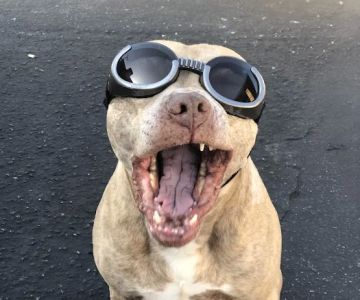- 1-what-is-pet-vestibular-syndrome
- 2-common-symptoms-and-how-to-recognize-them
- 3-understanding-the-causes-of-vestibular-syndrome
- 4-how-to-treat-pet-vestibular-syndrome-effectively
- 5-home-care-tips-for-pets-during-recovery
- 6-real-life-cases-and-owner-experiences
- 7-why-seeking-help-from-hidden-brook-veterinary-matters
1. What Is Pet Vestibular Syndrome
Pet vestibular syndrome is a disorder that affects an animal’s balance system, often leaving pet owners frightened when symptoms appear suddenly. It primarily impacts older dogs and cats, although younger pets can experience it as well. The vestibular system, located in the inner ear, helps coordinate balance, spatial orientation, and movement. When it malfunctions, your pet may appear dizzy, disoriented, or unable to stand properly.
While the condition can look alarming, not all cases are life-threatening. Understanding what causes vestibular syndrome and how to recognize it early can make a huge difference in your pet’s recovery.

1225 Warren Ave, Downers Grove, IL 60515, USA
See Details2. Common Symptoms and How to Recognize Them
Recognizing the early signs of vestibular syndrome can help prevent unnecessary panic and ensure your pet receives timely care. Symptoms often include:
- Head tilt to one side
- Rapid eye movement (nystagmus)
- Loss of coordination or falling over
- Circling or walking in one direction
- Nausea and vomiting due to dizziness
- Reluctance to stand or move
In dogs, vestibular syndrome often appears suddenly, while cats may show a gradual loss of coordination. If your pet suddenly stumbles or struggles to maintain balance, it’s important to remain calm and contact a professional right away. Early intervention often helps rule out more serious neurological or ear-related issues.
3. Understanding the Causes of Vestibular Syndrome
The causes of vestibular syndrome in pets can vary widely. In many cases, it’s idiopathic—meaning the exact cause is unknown. However, veterinarians have identified several contributing factors:
1. Ear Infections
Chronic or untreated ear infections can damage the inner ear and lead to balance issues. This is one of the most common causes in dogs, particularly those with floppy ears that trap moisture.
2. Neurological Problems
Conditions such as brain inflammation, tumors, or trauma can interfere with the brain’s ability to process balance signals, leading to vestibular symptoms.
3. Medication Side Effects
Certain antibiotics or toxic substances can cause temporary vestibular disturbances. It’s always crucial to follow dosing instructions carefully and consult a vet if unusual side effects occur.
4. Aging and Degenerative Changes
Senior pets may develop idiopathic vestibular syndrome due to natural degeneration of nerve pathways. These cases often resolve with supportive care and time.
4. How to Treat Pet Vestibular Syndrome Effectively
Treatment depends on the underlying cause. For idiopathic vestibular syndrome, supportive care is typically enough. If caused by infection, antibiotics or anti-inflammatory medications will likely be prescribed. In more severe cases involving brain disease or trauma, advanced diagnostics and treatment plans are necessary.
1. Veterinary Diagnosis
Your veterinarian will perform a physical and neurological exam, possibly including blood work or imaging such as X-rays or MRIs. This helps identify whether the issue originates in the ear or the central nervous system.
2. Symptom Management
Managing nausea, dehydration, and anxiety is key to recovery. Veterinarians often prescribe anti-nausea medication and recommend limiting movement to prevent injury.
3. Supportive Care
Most pets improve within a few days to weeks. Keeping them in a quiet, well-padded environment helps minimize distress. Gentle handling and reassurance can also help pets regain their confidence.
5. Home Care Tips for Pets During Recovery
Helping your pet recover from vestibular syndrome requires patience and consistency. Here’s what you can do at home:
- Keep your pet’s area free from obstacles to prevent falls.
- Use non-slip mats on smooth floors.
- Support your pet when walking, especially on stairs.
- Encourage hydration and offer soft foods if nausea occurs.
- Maintain a calm environment to reduce anxiety and stress.
Recovery can vary from a few days to several weeks, depending on the cause and severity. Most pets regain their balance fully, though some may retain a slight head tilt without major health consequences.
6. Real-Life Cases and Owner Experiences
One dog owner described how her 13-year-old Labrador, Daisy, suddenly began walking in circles and falling over. Believing it was a stroke, she rushed Daisy to the vet—only to learn it was vestibular syndrome. With supportive care and medication, Daisy improved dramatically within a week. Her story is a reminder that not every scary symptom signals a life-threatening condition.
Another case involved a cat named Luna who developed head tilt and imbalance after an ear infection. Once the infection was treated, Luna’s coordination returned, though her playful tilt remained part of her charm.
7. Why Seeking Help from Hidden Brook Veterinary Matters
At Hidden Brook Veterinary, we understand how alarming vestibular symptoms can be for pet owners. Our experienced veterinary team offers comprehensive diagnostic care, personalized treatment plans, and compassionate guidance through your pet’s recovery journey. We provide both in-clinic treatment and advice for home care to ensure your furry family member feels supported at every stage.
If you notice sudden balance problems, disorientation, or nausea in your pet, don’t wait. Early diagnosis can make all the difference. Visit Hidden Brook Veterinary to receive expert care and learn more about how to recognize and treat pet vestibular syndrome with confidence and compassion.










